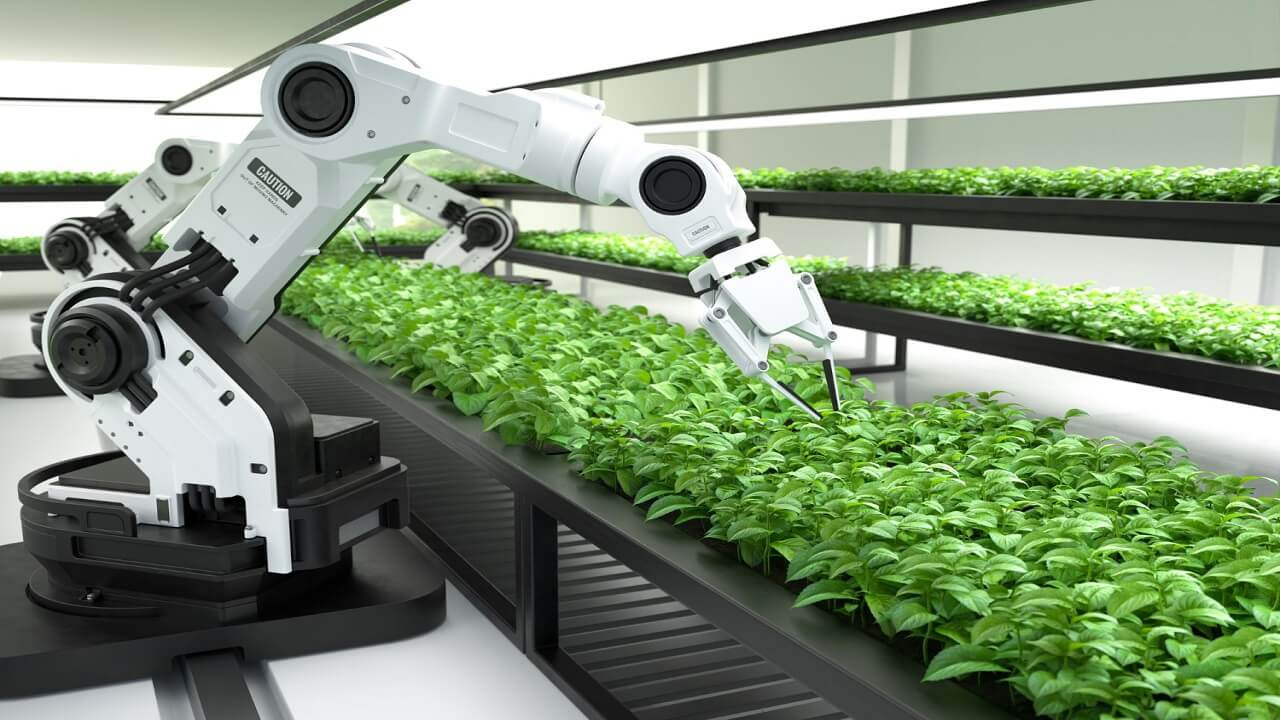
Applications of Agriculture Robots
May 26, 2025, 9:48 am
Robots are devices or systems that have been given more intelligence to enable them to operate on their own.
When certain components of an existing system are programmed to move or operate without human assistance, this is referred to as automated or autonomous equipment.
Agriculture Robot
Agriculture robot is an autonomous, proactive and programmable machine that can perform various repetitive agricultural chores on the farm, such as harvesting, weeding, pest control, seeding or land preparation, without direct human assistance.
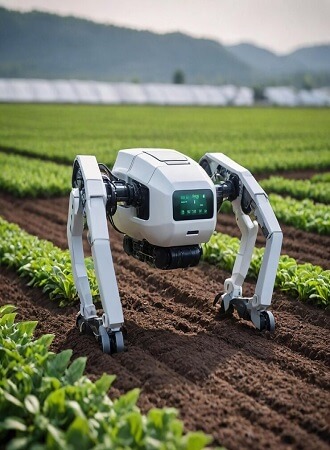
Applications of Agriculture Robots
The possible applications of agriculture robots are as numerous as the tasks involved in agriculture. There are currently prototypes for soil preparation, planting, pest management, and harvesting cereal crops (such as barley or maize). Agricultural equipment automation can take many different forms, ranging from creating new autonomous platforms that can perform tasks to making current machinery driver-free.
Even though these new platforms are often quite advanced and new kinds of equipment are always being created, farmers may already benefit from the assistance of basic agriculture robots (agrobots) that are made for simple activities. Like other technological equipment, the degree of complexity is directly correlated with cost and maintenance needs. Farmers must modify their agricultural methods and capabilities in order to implement these technologies at the field level.
Agriculture robots frequently perform poorly in dynamic and unstructured situations because of inherent uncertainties, unknown operational settings, and the unpredictable nature of events and environmental conditions.
Uses of Agriculture Robots
Agriculture robots (agrobots) are capable of a wide range of jobs. The three main tasks of the first commercially accessible agrobots are weed control, harvesting specialty crops (vegetables or berries) and field management. These three main uses are explained below:
Weed Control
An agrobot can save money by reducing labor costs associated with weeding and weed control, limiting the use of inputs like pesticides, herbicides and minimizing output losses brought on by delayed insect and disease diagnosis.
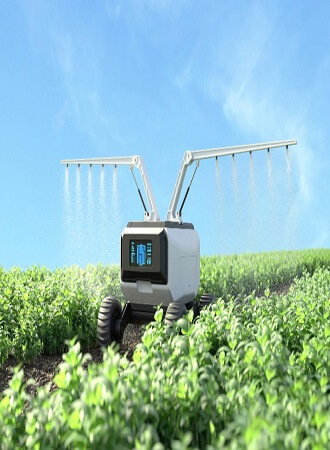
With the help of agricultural robots, farmers may use fewer pesticides, herbicides, and fertilizers, which benefits the environment. Mechanical weed control is now a reality; further features being developed include early pest identification and micro-application of inputs, which will significantly reduce or even completely remove the requirement for inputs.
Harvesting
Particularly in fruit and vegetable plantations, many commercial farmers find it difficult to locate enough workers to meet labor demands during the harvest season. This gap can be closed and the cost of specialist labor can be decreased with agricultural robots. Furthermore, because they are not constrained by human physical or legal constraints, agriculture robots can function for extended periods of time on the farm, working both day and night.
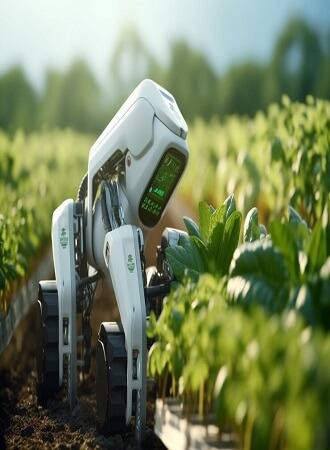
Field Management
Due to the fact that agriculture robots are lighter than traditional machinery (such as tractors with implements or specialized equipment for spraying or harvesting), they can access fields that are inaccessible to heavy machinery, such as vineyards on slopes or land that experiences wet conditions, and they can help with soil compaction issues.
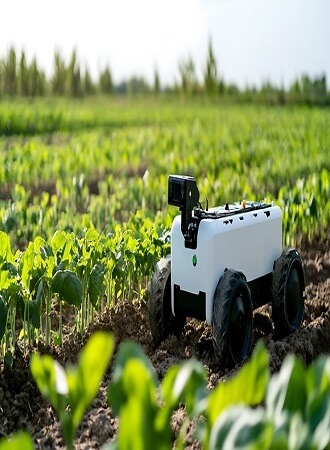
Nimble agriculture robots are also effective for gathering information and data on the farm that are instrumental for disease and insect monitoring.
Challenges of Agricultural Robots
The implementation of any technology entails challenges. The main challenges for the adoption of agricultural robotics are described below:
Ownership and Management of Digital Data
Individual data is gathered by digital technology. Companies use the data generated by agricultural equipment sensors for their business models, just like in other industries; in fact, data processing and analysis are essential to the proper operation of agrobots. To prevent abuse by other parties, farmers and individuals should always be protected by clear rules and regulations.

However, farmers may be able to profit from the data they generate due to the ongoing need for data to develop, optimize, or run the AI that powers the software that controls autonomous machinery. Additionally, data production is a means of tracking environmental indicators or ecosystem services (e.g. carbon sequestration).
Capacity
Knowledge, ability, and capacity are the three main criteria that determine how quickly a new technology is adopted. It's possible that many farmers lack the skills necessary to operate or comprehend agriculture robots. As with extension agents and service providers, a competent agricultural practitioner is not always an expert in automation and digital technologies.

As a result, building up capacity is crucial for the adoption of automated machinery and its proper operation; only then can farmers fully utilize agrobots.
The process is complex; different actors using a variety of approaches must support one other throughout. The willingness to adapt and accept is the primary force behind change when there are no outside incentives (such as laws or market prices).
Building capacity must extend beyond current farmers. It is crucial to expose young people, who will be the farmers of the future, to new technology while they are in school (many high school curricula now include robotics and programming).
Individuals with innovative ideas can be drawn to the field of agricultural robotics by directing their interest in digital technologies toward applications in agriculture. If countries want to have the skilled labor required to run, maintain, and develop the technology, they must modify their academic and educational programs.
Furthermore, capacity building must involve all stakeholders, including extension agents, technicians, farmers, and policymakers who are in charge of establishing the proper environment through legislation, incentives, or training programs (education, industry, and agriculture). Knowledge acquisition must not be restricted to end users.
Farming System Adaptation
Making agriculture robots function correctly is not always simple for farmers that integrate them into their production system. There is a widespread misconception that robots will just take the place of current machinery and start performing its job right away. On the contrary, the farm system needs to adjust to the robot in order to get the optimum outcomes.
Farmers have to adapt both in terms of timing and mindset. In the case of row spacing or terrain leveling, for instance, a farmer who is used to a particular crop structure (such as the architecture of fruit trees) or spacing between crops must modify the spacing or structure to make sure that it precisely matches the agrobot's operating parameters as it moves among the farms.
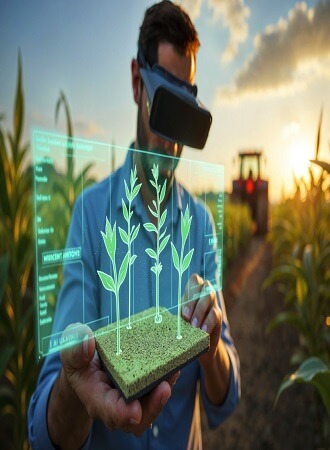
There is already evidence that farmers who adapt accordingly achieve better results and profitability based on the good performance of the agrobots. Agrobots currently are not cheap when compared to standard practices and equipment; as with any new technology, the first available models are very high in price.
Agrobots are of interest to farmers operating in all kinds of situations in a wide variety of locations. However, some robots may be designed specifically to operate in a given location, based on the parameters of a particular farm; this limits the usability of the equipment and compromises business models that imply input sharing or service provision.
Purchase Price
Production may become unprofitable if the purchase price or operating costs exceed the available resources. On the other hand, farmers find it increasingly profitable to use specialized agriculture robots that reduce costs and lessen reliance on limited human labor on large commercially oriented farms that produce high-value horticulture crops and have high labor costs during harvest season (due to high manpower requirements or lack of human labor availability).
Agrobots are already being utilized in a few highly specialized horticulture farms, demonstrating that automation can reduce opportunity costs. However, successful business models that allow the farmer to profit from the technology without actually owning the robot are still needed. Two potential solutions—cooperative ownership and service provision—are already present in many farming systems.
IT Infrastructure
The usage of ICTs is directly related to the idea of Agriculture 4.0, which is highly dependent on the availability of sufficient IT infrastructure in order to collect, process, and share data. The proper infrastructure must be available for agrobots to function independently.
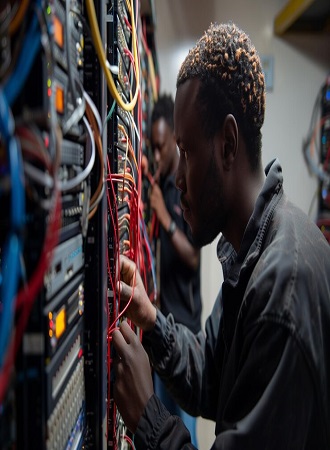
They also need data from external sensors (such as drone imagery and soil probes), built-in sensors, remote sensors (such as satellite images), programmed actors, and multiple agronomic parameters that are stored in their software.
All of this data must be gathered and transmitted, and having access to dependable IT infrastructure that has the proper signal strength, coverage, and energy supply is crucial for supporting data transfer, not only for satellite positioning (such as the global positioning system [GPS]), but also for radio or phone signals. In addition to providing the agriculture robot with data to function, the farm manager and operators must also manage the agrobot, interpret the data it generates while in operation, and make decisions using the information at hand.
This is a significant problem because not all rural places, particularly in developing nations, have enough bandwidth for phone signals. To adapt agrobot ICTs to the conditions of developing countries, engineering solutions might be needed for difficult situations and settings.
Technical Maintenance and Servicing
The availability of suitable technical servicing and after-sales services is essential for the effective adoption of agricultural robots. Like with other new technologies, investing in automated equipment or new technology only to find out later that replacement components are not readily available within a reasonable time or distance is a waste of effort and money.
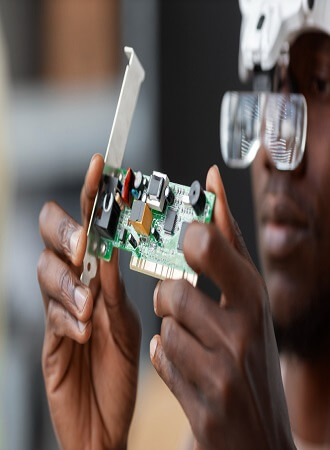
The same is true for the skilled and trained technicians required to fix machinery and offer maintenance assistance; however, in the case of agriculture robots, ICT engineers and robotic technicians are required in addition to mechanics.
REFERENCES
FAO AGRICULTURE 4.0: Agricultural Robotics and Automated Equipment for Sustainable Crop Production.
Federation of International Robot-Sport Association


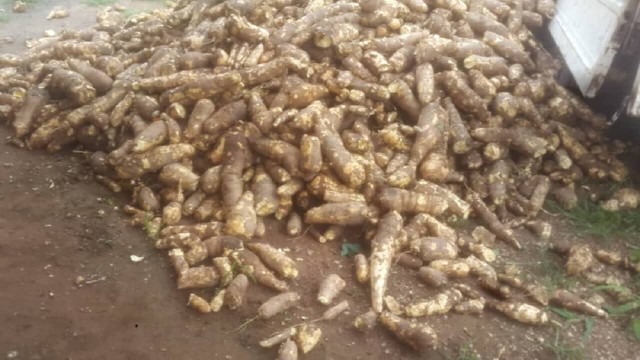

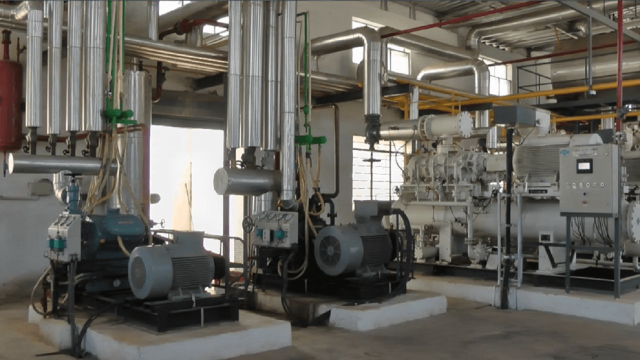
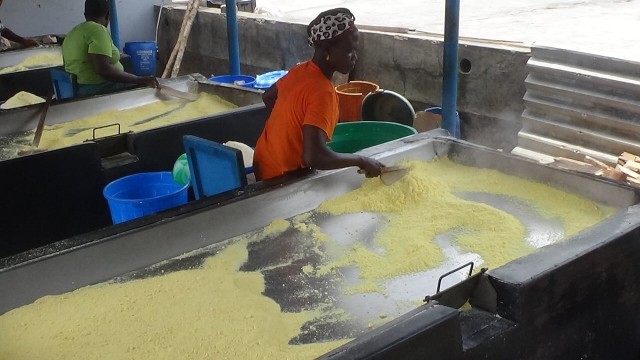

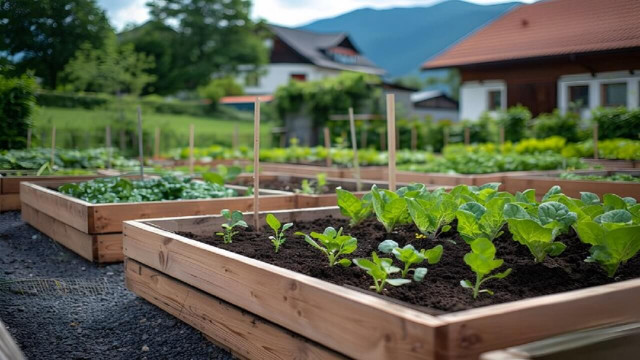
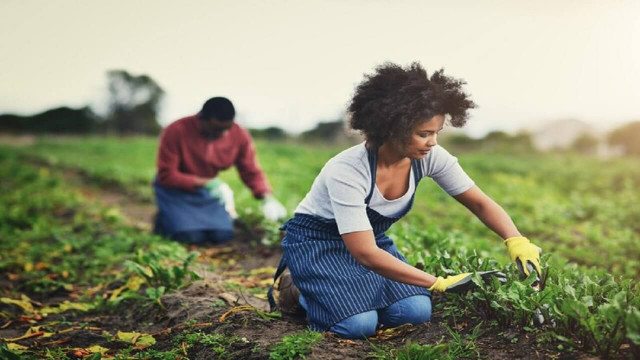



Share This Article: